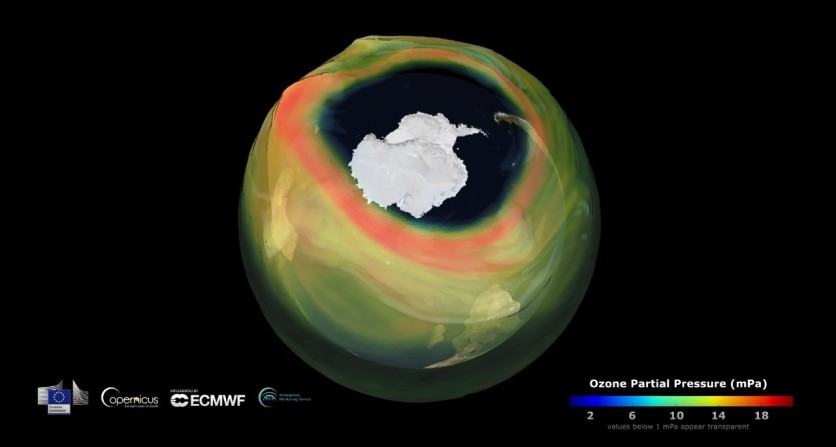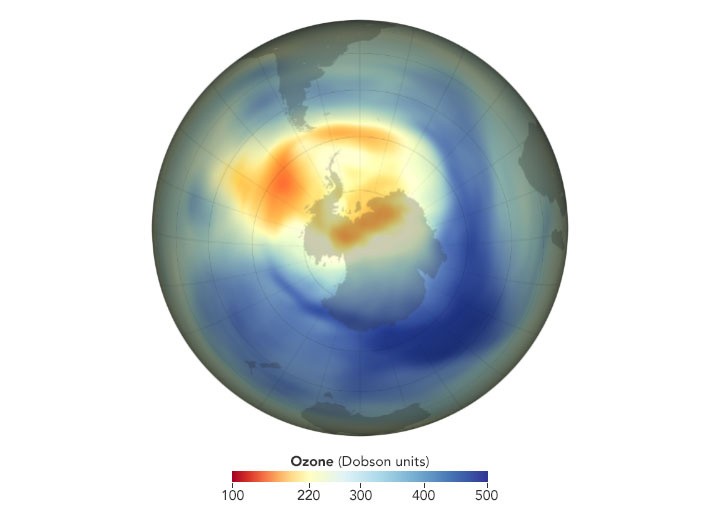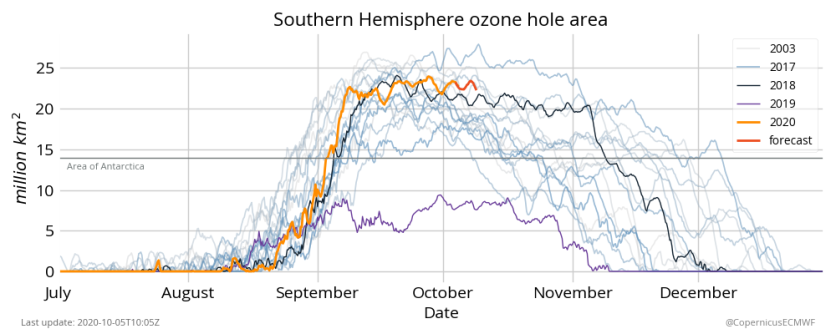Researchers tracking the ozone hole over the Antarctic daily claim the hole has already reached its peak for 2020, making it one of the largest and deepest hole.
Copernicus Atmosphere Monitoring Service (CAMS) scientists use satellite data to track the hole every day say it has reached its peak for 2020 becoming one of the largest holes in recent years. The ozone hole begins to grow at the start of the Antarctic Spring in August and reaches its peak by October.

For 2020, CAMS researchers said the ozone hole has already reached its maximum, which is now "in the upper part of the pack in the last fifteen years or so." It is similar to the large hole that developed in 2018 and much larger than the one in 2019, which was unusually small.
Since 1985 when the ozone depletion was first spotted over Antarctica, authorities, and environmentalists have been introducing different measures trying to shrink the hole.

Ozone is a three-oxygen compound that develops naturally in the atmosphere. While it is toxic when ingested by humans, it shields the Earth from the harmful ultraviolet rays that come from the sun at its location above the Earth's surface, which is up to ten miles.
CAMS director Vincent-Henri Peuch said the progress in the ozone hole is much different each year. "With the sunlight returning to the South Pole in the last weeks, we saw continued ozone depletion over the area," Peuch noted.
Despite the resumption of the progress ozone hole, experts are confident that since the introduction of restrictions on ozone-destroying halocarbons in 1987 through the Montreal Protocol, the hole has been recovering gradually.
"After the unusually small and short-lived ozone hole in 2019, which was driven by special meteorological conditions, we are registering a rather large one again this year," said the CAMS director adding that the Montreal Protocol that bans emissions of ozone-depleting chemicals should be continuously enforced.

Since Antarctica enters into its summertime at this time of year and temperatures in the stratosphere begin to rise, the mechanism that uses up ozone and creates the hole slows down. It eventually stops the hole from developing further.
Ozone-depleting polar clouds
At extremely cold temperatures at -78°C, a specific type of cloud forms and causes ozone depletion. Called polar stratospheric cloud, these frigid clouds contain ice crystals that convert chemicals into reactive compounds that damage the ozone.

These chemicals contain bromine and chlorine, which become chemically active as it reaches the frigid vortex swirling over the South Pole. By the end of the 20th century, huge amounts of these chemicals were produced when CFCs, HCFCs, and other halocarbons were used as coolants.
According to Peuch, CAMS continuously monitors the ozone layer to provide updated information about the magnitude and extent of the ozone hole as it develops and recovers every year. The European researchers also provide forecasts about stratospheric ozone concentrations for up to five days in advance.
"We also keep an eye on the amount of UV radiation reaching the Earth's surface, which also depends on clouds and aerosols in the atmosphere," the CAMS director added.
Read also: Halloween 2020 Will Experience Zombie Storms as well as the Rare Blue Moon!
This is owned by Tech Times
Written by CJ Robles
ⓒ 2025 TECHTIMES.com All rights reserved. Do not reproduce without permission.




